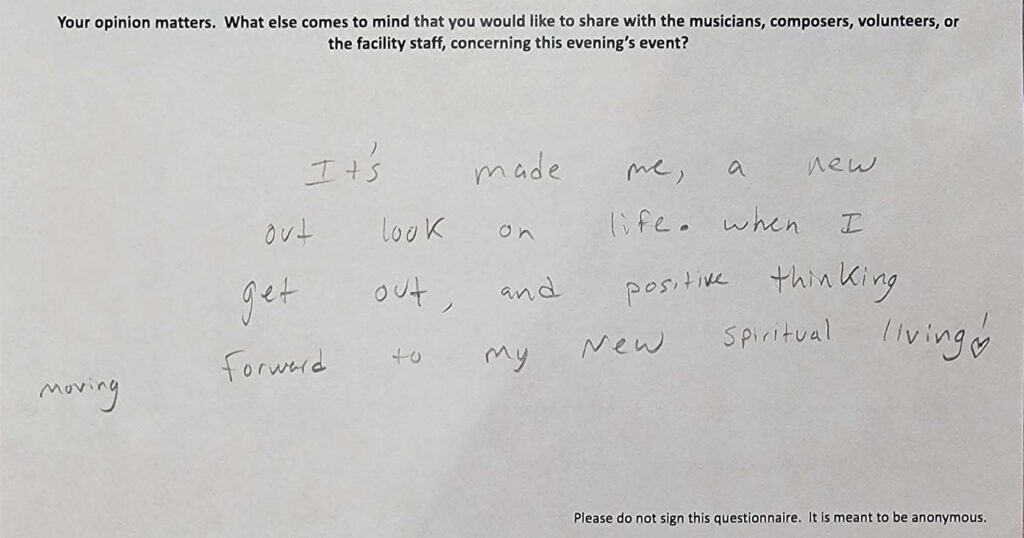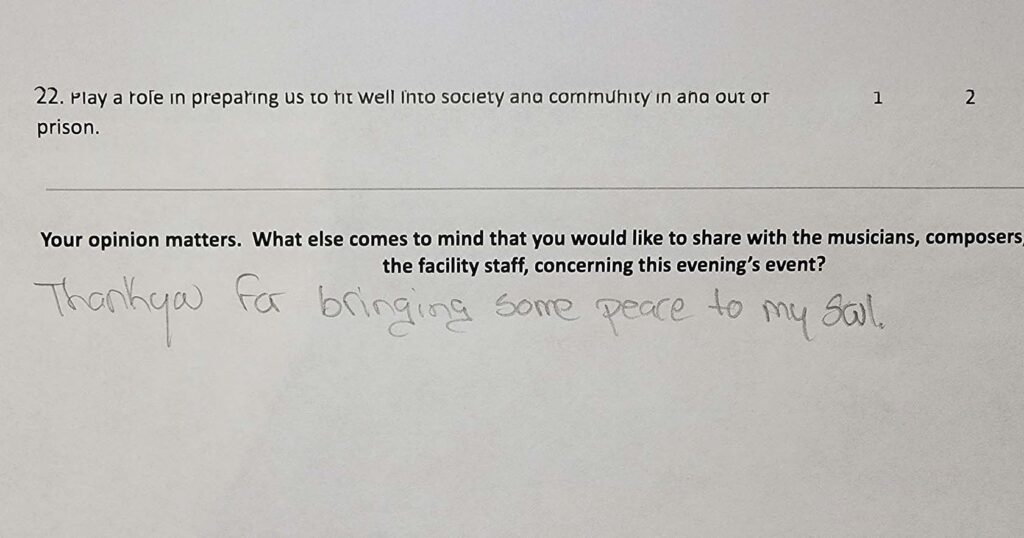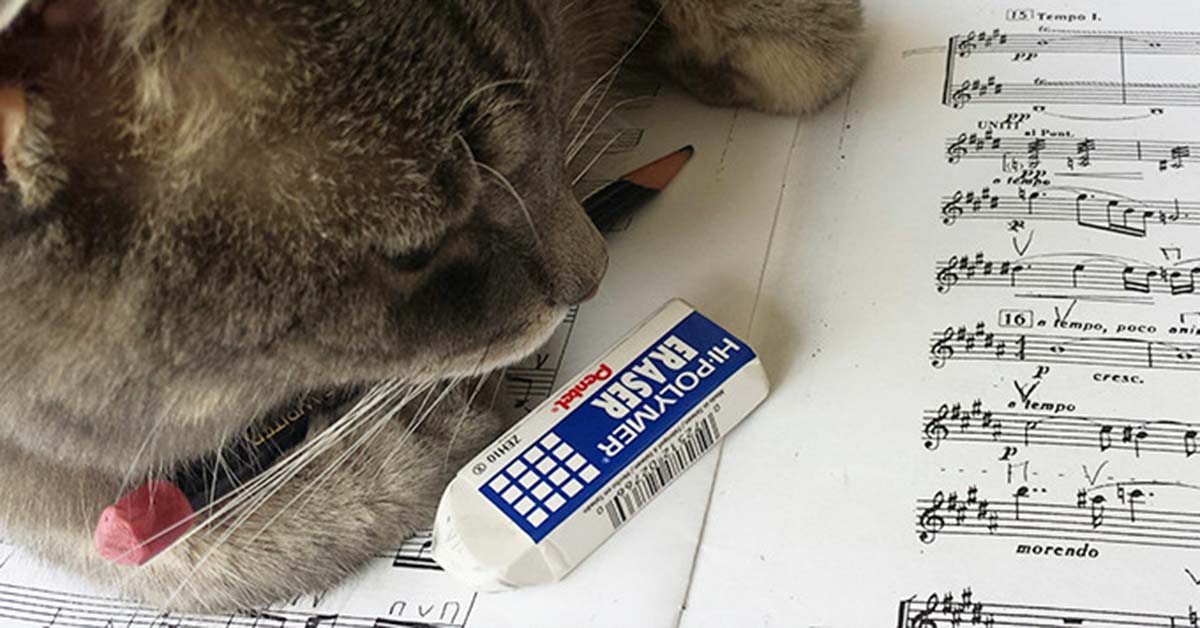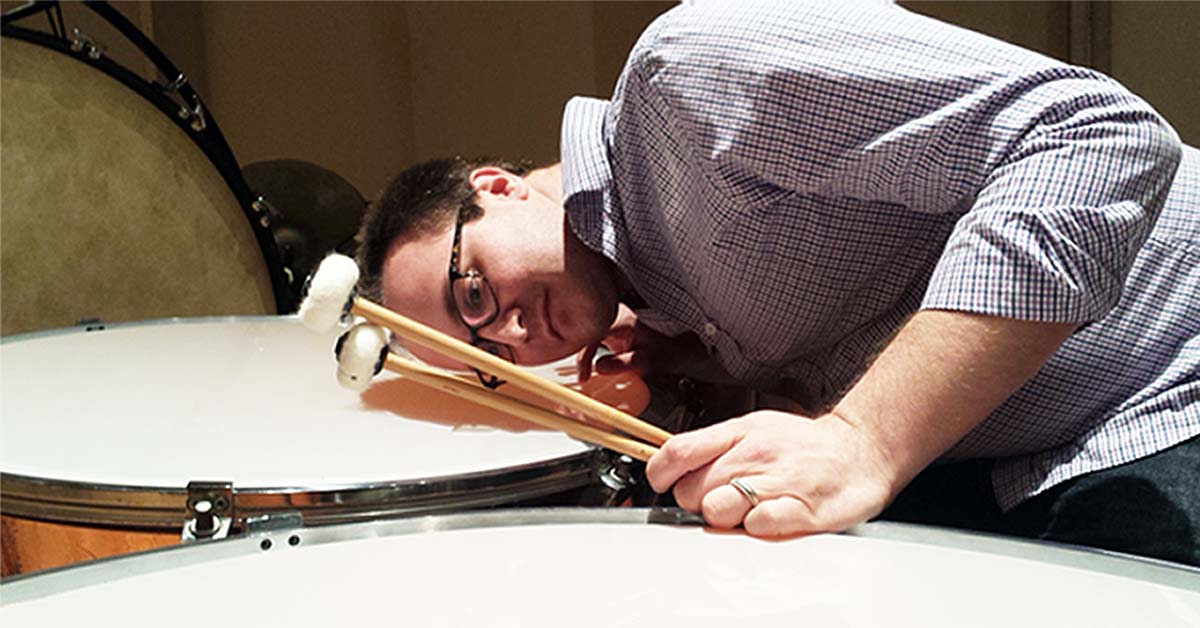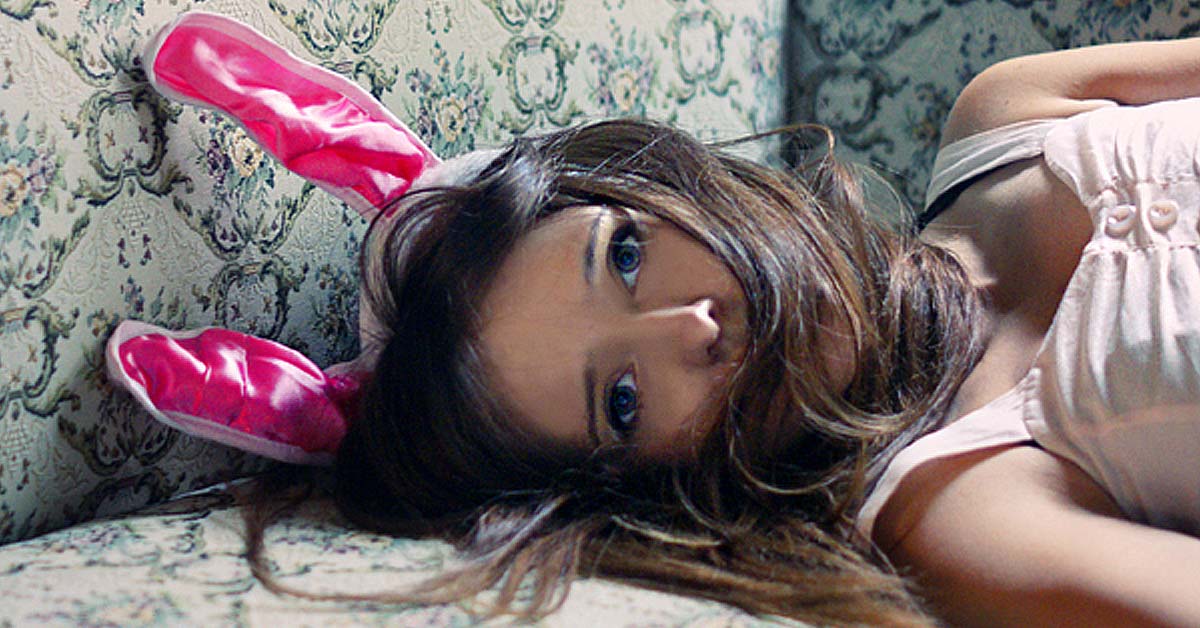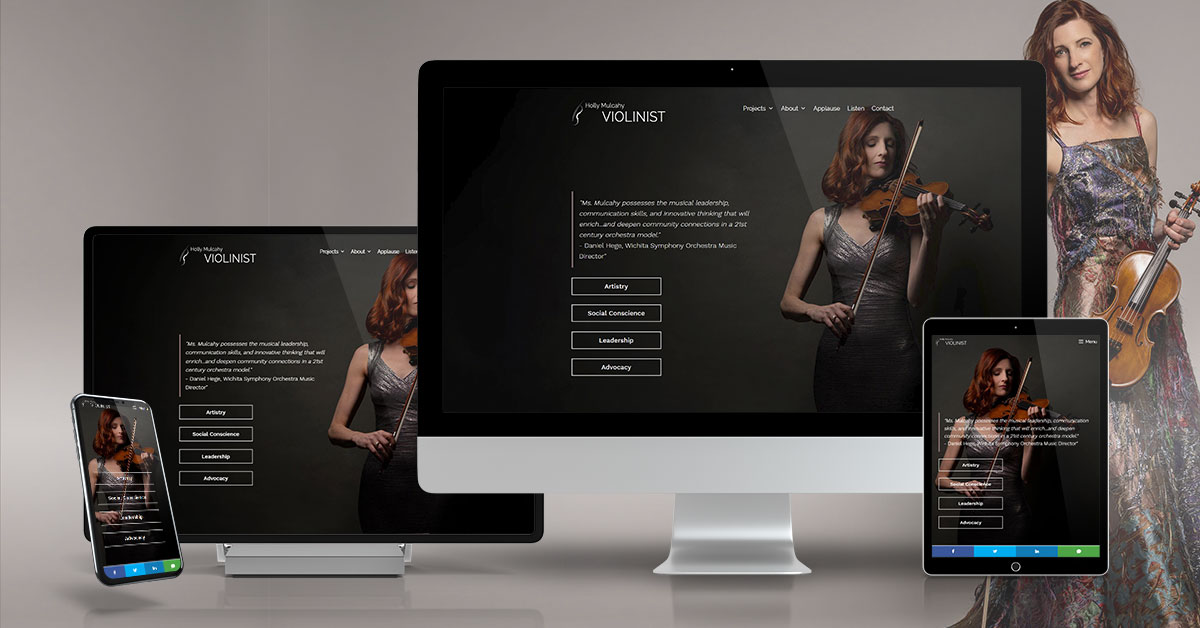The Arizona State Prison Complex in Winslow is not your typical concert hall, yet every visit reminds me how alive and resonant music can be, a lifeline to humanity even behind walls and barbed wire. Recently, a small ensemble from Arts Capacity’s partner orchestra, The Flagstaff Symphony, joined me for a program spanning Bach, Chaminade, Rachmaninoff, Claude Bolling, and living composers Connor Chee and Herman Beeftink.
The program opened with Seasons for Flute and Piano: Spring by Herman Beeftink. Amy Fu Schuck’s flute danced lightly above Michelle Wachter’s sparkling piano lines. Even in this restrained setting, the springtime energy lifted the room. One prisoner whispered to his neighbor, clearly moved by the freshness of sound, a moment that reminded me why these concerts matter.
Connor Chee’s Sandpaintings No. 2: Eastern Clouds, performed by Michelle Wachter, sparked thoughtful conversation. As a living Navajo composer, Chee’s music brought a unique perspective that resonated deeply with the audience, many of whom are Native American. After the music ended, one listener shared that it brought him peace, imagining himself enveloped by nature. It is remarkable that a single piano can create a mental landscape so vivid it feels almost tangible.
During Bach’s Flute Sonata in E minor, one prisoner offered a description I cannot forget. “The cello was the picture frame, the flute the image within. The cello laid down the boundaries, the flute was the dancer in the picture.” Such honesty and poetic insight from someone who had never played the music themselves left a lasting impression.
We ended on a playful note with Claude Bolling’s Suite for Flute and Piano: Baroque and Blue. The swing-inflected rhythms made a few heads bob and a few smiles appear. Then came a question I had not anticipated. “Why don’t you all smile when you play?”
It is simple, yet profound. We answered that in the midst of concentration, technique, and interpretation, it is easy to forget that we are being watched. Live music is not just sound in the air. It is a conversation, a shared experience, a connection. Our expressions, our presence, our smiles, even the small ones, communicate alongside the music.
The audience notices and they feel it. And sometimes it takes a quiet, honest observation from someone unexpected to remind us of that truth.
These concerts continue to inspire me! They remind me that the future of classical music is not only about repertoire or technique. It is about dialogue, imagination, and connection sometimes in the most unlikely places. And sometimes it is the audience, silently or boldly, teaching us how to be fully present in our own performance.
